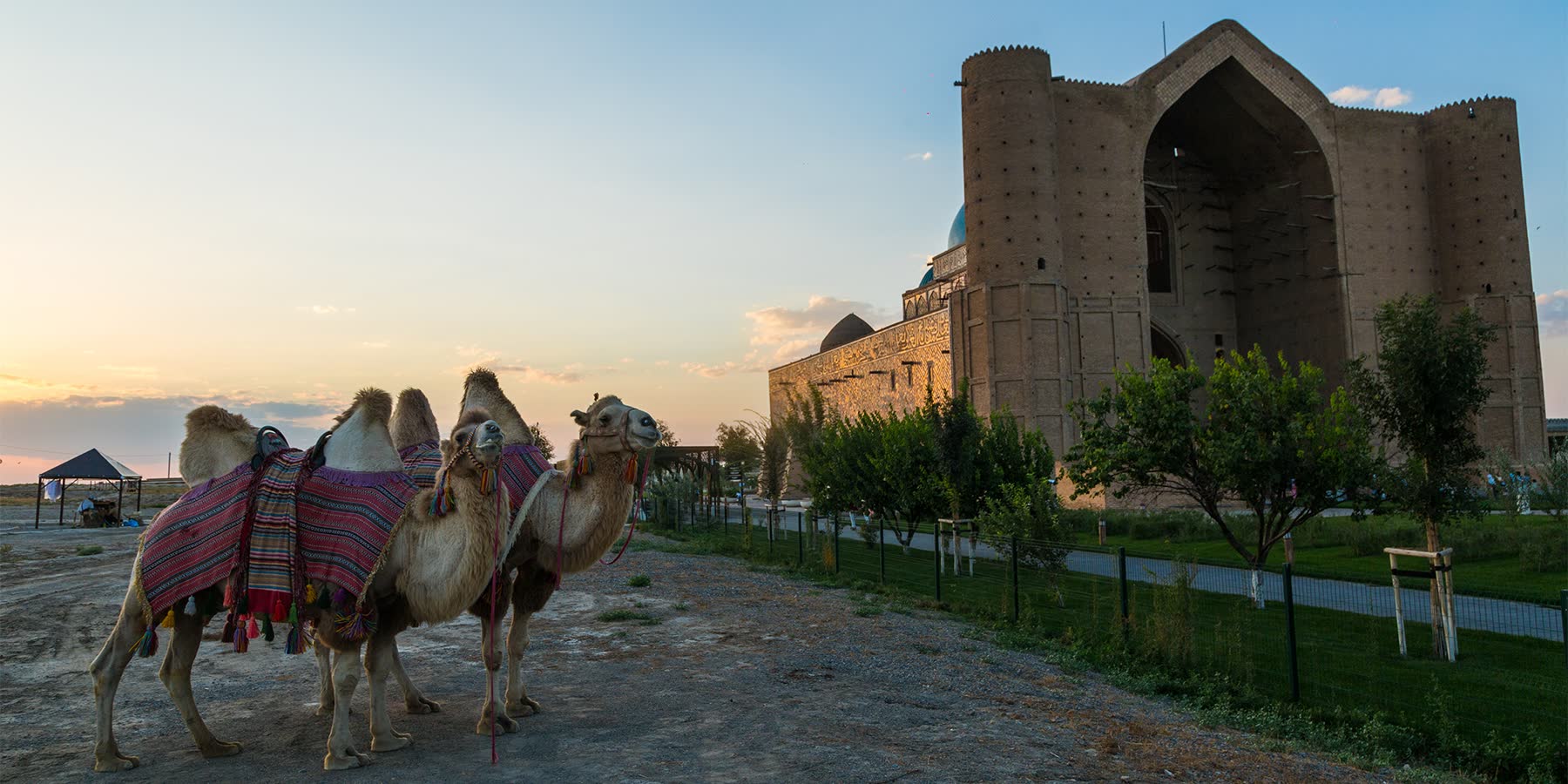Mausoleum of Khoja Ahmed Yasawi
The Mausoleum of Khoja Ahmed Yasawi is one of the most significant historical and architectural landmarks in Kazakhstan. It is located in the ancient city of Turkistan in the southern part of the country.
Here are some key details about the mausoleum:

Historical Significance: The Mausoleum of Khoja Ahmed Yasawi is a UNESCO World Heritage Site and holds great historical and religious importance. It is dedicated to the memory of Khoja Ahmed Yasawi, a 12th-century Sufi mystic, poet, and philosopher. He is considered one of the most important figures in the history of Sufism and spiritual thought in the region.
Construction: The construction of the mausoleum began in the late 14th century, during the reign of Timur (Tamerlane), the famous Central Asian conqueror. However, the mausoleum was never completed as originally planned.
Architecture: The mausoleum is an outstanding example of Islamic architecture, featuring a large and impressive turquoise dome and intricate geometric and floral designs. The building is characterized by a unique blend of Timurid and Kazakh architectural styles.
Pilgrimage Site: The Mausoleum of Khoja Ahmed Yasawi has been a significant pilgrimage site for Muslims, particularly those in Central Asia. It is believed to be a place of spiritual significance, and many pilgrims visit the mausoleum seeking blessings and spiritual fulfillment.
Conservation and Restoration: Over the years, the mausoleum underwent extensive restoration and conservation efforts to preserve and protect its historical and architectural heritage.
Modern Cultural Center: In addition to its historical and religious importance, the mausoleum complex has been developed into a modern cultural and educational center. It includes a museum, library, and research facilities, allowing visitors to learn more about the history and legacy of Khoja Ahmed Yasawi.
The Mausoleum of Khoja Ahmed Yasawi is a symbol of Kazakhstan's rich cultural and historical heritage. Its stunning architecture and the spiritual significance of Khoja Ahmed Yasawi make it an essential destination for tourists and pilgrims alike. It reflects the deep spiritual and cultural roots of the region and its historical contributions to Islamic art and architecture.
RELATED DESTINATIONS
The Mausoleum of Khoja Ahmed Yasawi is one of the most significant historical and architectural landmarks in Kazakhstan. It is located in the ancient city of Turkistan in the southern part of the country.
The Muyunkum Desert, also spelled as "Moynaqum" or "Moyunqum," is a desert located in southern Kazakhstan, near the border with Uzbekistan.
Otyrar, also known as Otrar, is an ancient historical and archaeological site located in southern Kazakhstan. It was once a bustling and influential city along the Silk Road, playing a significant role in the region's history.


